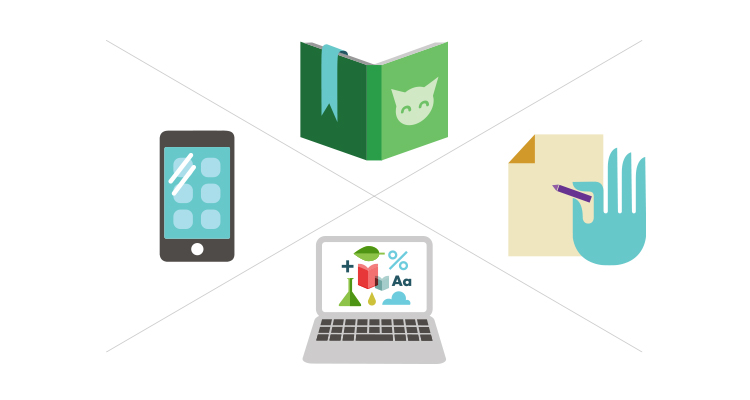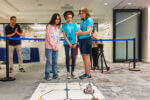In a recent report by Xconomy, which examines trends in business and the economy, the company asked leading scientists, inventors, innovators, and entrepreneurs from around the country one simple question: what should students be studying now to prepare for ten years from now?
The answers were diverse and fascinating, and I’d encourage everyone to read the report highlights (available for download here), if not the whole thing, and to share it with your students. It’s worth your while.
How do we prepare students for jobs that don’t exist yet, where they’ll use technologies that haven’t been invented, in order to solve problems we don’t even know are problems yet?
Even the Xconomists don’t have the answer to that and agree that young people are facing an uncertain future. In order to help prepare students for whatever the next few decades might look like, they made some suggestions for fields of study students should focus on that are sure to be important. While suggestions were as varied as the respondents, there was notable consensus on several subjectsspecifically mathematics, biology, computer science and programming, strong verbal and written communication skills, and an understanding of other cultures and languages.
In the interest of engaging kids in what many perceive as difficult, boring, not-very-fun subjects, I’ll be sharing some cool digital games, tools and online resources, as well as ideas for piquing kids’ interest in these important subjects.
This week, programming!
The Xconomists had this to say about the importance of programming and computer science:
Whether you major in it or not, a fairly non-trivial amount of computer science would be helpful.
“[develop] an understanding of the basics of computer science (which includes at least some programming in a programming language of your choice). No matter what your field of study, you should focus on learning where computer science will hybridize with it to produce great progress.
More than anything, they should be studying math, including statistics and probability, and programming.
Computer science will continue to spread into all aspects of human life.
Understanding computer languages will become even more important in the future, since computers are the universal tools of our time.”
Out of all the subjects suggested, computer science and programming was probably mentioned the most frequently. It’s clear that a strong understanding of computers and some programming skills will be extremely valuable, even if students pursue other fields as their main course of study. But how do you get kids started in programming, particularly if it’s not offered at school or if you don’t know much about it yourself?
Well, luckily there are TONS of resources online for teaching your kids (or yourself) the basics of coding!
First off of course, high schoolers could take an elective course in computer science or programming. K12 offers quite a few, from C++ programming, to Flash game design. For the younger kids, or those seeking to teach themselves informally, here are some other (all free!) options.
Sign up for Codeyear! 2012 is the year to learn coding, according to Codecademy, a new startup which is proving incredibly popular. The company’s Codeyear program is a free, year long program that emails you a coding lesson every week, starting with basic Javascript. I’m personally going through this program and am finding it approachable and fun. A high schooler or tech saavy middle schooler could certainly follow along with the lessons.
For younger kids, check out Mozilla’s Hackasaurus an open educational resource that allows learners to see what the web is made of, remix and change their favorite web pages, and share their creations with friends. Mozilla’s objective is to teach kids HTML and CSS in a fun way, and to encourage them to tinker with technology rather than just consume it.
Another option is Kodu which uses a basic visual programming language to let kids create their own games. The Xbox version costs $5, but a PC version is available as a free download. Kodu says that ages eight and up typically have the most success.
Alice is a project of Carnegie Mellon and several other universities that allows students to learn fundamental programming concepts in the context of creating animated movies and simple video games in a 3D programming environment. A variation of Alice called Storytelling Alice, has been found to greatly increase middle school girls’ interest in programming. Both are available as free downloads.
Scratch is a very popular programming language developed by MIT that allows kids to create and share interactive stories, games, and animation. It’s intended for kids 8-16, but younger learners can use it too, they just might need help from a parent or older sibling. The MIT team says Scratch teaches kids basic mathematical and computational ideas, and encourages them to think creatively, reason systematically, and work collaboratively.
Microsoft Small Basic, this free download from Microsoft teaches kids ages 10 to 16 a simplified version of Basic. Kids can learn to code games and programs in a friendly and fun environment.
Teaching kids the basics of coding when they’re young not only better prepares them for a future in which computer science will be extremely important. It also reinforces valuable critical thinking, cause and effect, logic and problem solving skills, while game design can encourage creativity and narrative storytelling. So get em started young!
Join me next week when I’ll share some resources for engaging kids in the dreaded math!















































































































